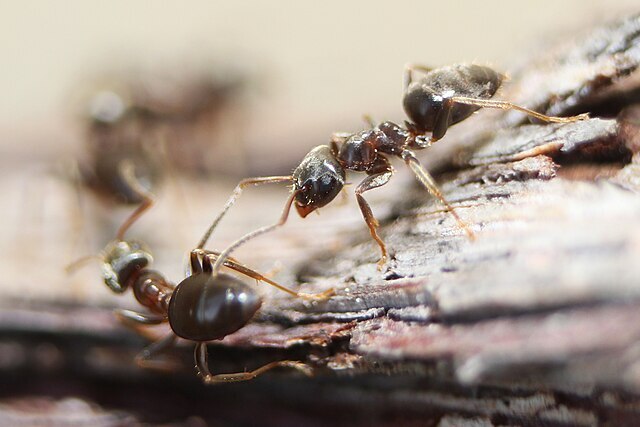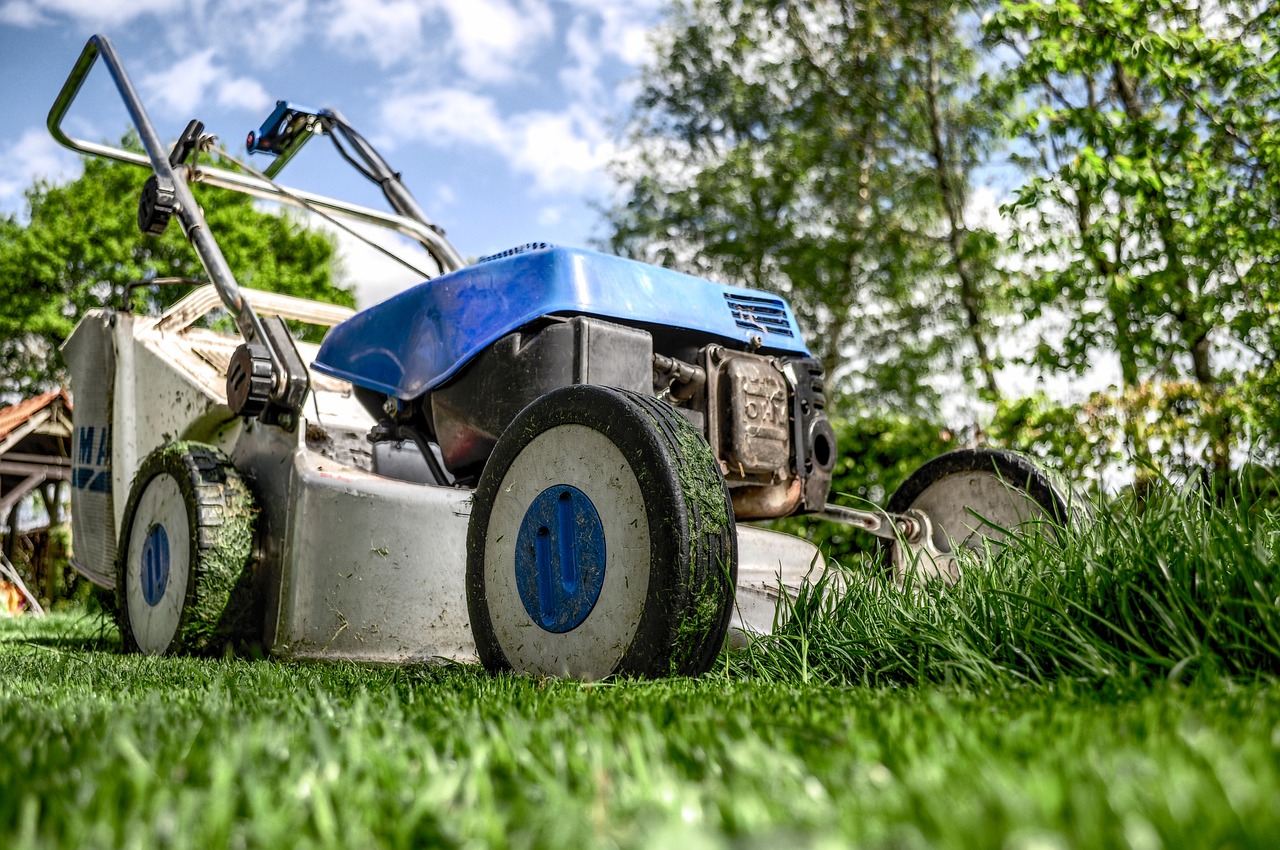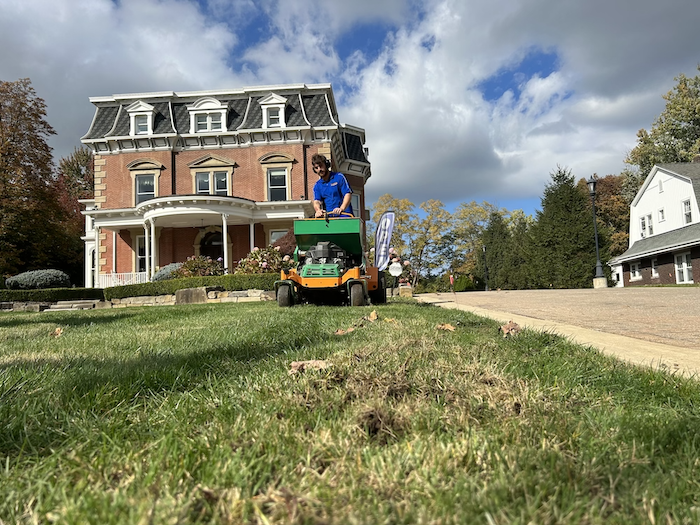
Seasonal Pest Activity in Northeast Ohio: What to Expect
Are you sick of trying to predict when the bugs will start coming out in Northeast Ohio? Are you done messing around with DIY pest prevention methods that aren’t effective? Are you tired of having the investments you’ve made in your indoor and outdoor spaces be ruined by insect infestations?
If it seems like there’s always another pest to contend with in Northeast Ohio, you’re not wrong.
While the change of seasons is a perk of living in Northeast Ohio, it can also mean that fluctuating weather patterns and temperatures impact which bugs are prominent in each season.
In fact, insect infestations can even occur based on wind patterns as strong winds and storms transport populations from other areas.
So, if you’re trying to answer the question, “when is bug season in Ohio,” the answer may be, “it depends on the season—and even on the year.” Let’s break it down by the most common house bugs in Ohio each season.
/technician%20spraying%20perimeter%20pest%20control.jpg?width=1600&height=902&name=technician%20spraying%20perimeter%20pest%20control.jpg)
Top 12 Household Bugs & Yard Pests In Ohio by Season
Here’s a look at when each type of insect is at its worst each season and how to prevent them.
Spring Pests in Northeast Ohio: Fleas, Ants, and Ticks
1. Fleas
Fleas are small (often only 2.5 millimeters in length) and can range in color from brown to reddish brown. They have flat bodies, six long legs, no wings, and mouthparts that are used to draw blood from their hosts.
When is Flea Season?
Fleas typically come out as weather reaches warmer temperatures in March or April, stick around through summertime, and can be present through fall and early winters if temperatures remain mild. They can survive indoors year-round if they have a host on which to feed (for example, your pet).
Signs of Flea Infestation
- Your pet won’t stop scratching
- Bites that look like tiny, itchy bumps on your feet, ankles, and legs
- Flea eggs that are small, white particles
- Flea larvae that are white, small, wormlike creatures
- Small, black or reddish-brown specks on your pet or in their bedding, otherwise known as “flea dirt”
How to Prevent Fleas
- Mow your lawn frequently—fleas do not flourish in direct sunlight
- Steam and vacuum your carpets
- Frequently wash your pet and their bedding
- Brush your pets regularly
- Check your pets for fleas
- Invest in flea and tick treatments for your property

2. Ants
Ants have a head with two bent antennae, a thorax where its six legs are attached, and a larger abdomen. They can vary in size from 1/34 inch to ¾ inch and be black, brown, or red.

When is Ant Season?
Ants often start to come inside homes during spring when wetter conditions force them to seek out a drier refuge.
Signs of Ant Infestation
- Trails of ants, especially in kitchens or bathrooms, where there’s access to water
- Dirt piles or wood shavings
- Structural damage or weak wood caused by ants boring into structures
How to Prevent Ants
- Seal food containers and avoid leaving pet food out on the floor
- Keep your house clean and tidy
- Treat your home with perimeter pest control
3. Ticks
Ticks can range in size from ⅛ inch to ½ inch and in color from red to brown to black, depending on the species. They are oval shaped, have eight legs, and mouthparts used to feed on hosts.
They can spread diseases such as Lyme disease.
When is Tick Season?
Ticks begin to crop up in warmer months such as April and can be active through November.
Signs of Tick Infestation
- Spotting ticks on pets, skin, clothing, or furniture
- Tick bites on, which are small red marks that itch and/or swell
- Unexplained illness in humans or pets
/dog%20rolling%20in%20green%20grass.jpg?width=1200&height=676&name=dog%20rolling%20in%20green%20grass.jpg)
How to Prevent Ticks
- Medicate pets with anti-tick treatments
- Avoid walking through tall grasses
- Check yourself and your pets after walking through tall grasses or woods
- Sign up for anti-flea and tick applications
Summer Pests in Northeast Ohio: Mosquitoes, Chinch Bugs, Billbugs, and Fall Armyworm
4. Mosquitoes
Mosquitoes are oval-shaped insects that can be between 1/4 and 3/8 inches long. They have six legs, two antennae, one pair of wings, and a long, pointy mouthpart designed for sucking blood.
When is Mosquito Season?
Mosquitoes crop up when the weather gets warmer in the early summer months. They thrive in wet, humid conditions.
Pro Tip: Mosquitoes tend to hide in areas of dense foliage, and they lay their eggs in areas of standing water.
Signs of Mosquito Infestation
- Mosquito sightings
- Buzzing noises
- Itchy bites
How to Prevent Mosquitoes
- Sign up for a mosquito control program that uses natural oils like lavender, wintergreen, rosemary, and thyme to repel them
- Eliminate areas of standing water on your property
- Improve your yard’s drainage
- Trim back thick foliage near your house
- Clear clutter from your yard
- Reduce the number of bright lights around your home

5. Chinch Bugs
Small in size and black in color, chinch bugs are surface-feeding insects that feature reddish-brownish legs and wings with white markings.
When is Chinch Bug Season?
While chinch bug season can span from spring to fall, chinch bugs are most prominent during the hottest, driest months of summertime.
Signs of Chinch Bug Infestation
Chinch bugs damage lawns by sucking sap from the grass blades, causing symptoms that often resemble drought stress:
- Withered grass
- Dry, yellow patches in the lawn that resemble straw
- Dead grass that remains rooted in the soil
Pro Tip: Check for chinch bugs by preparing a “float test.” Insert a can with both ends removed into the area of your lawn where you suspect chinch bugs may be present. Next, fill the can with water. If there are chinch bugs in your lawn, they will float to the surface within about five to 10 minutes.
How to Prevent Chinch Bugs
- Keep a healthy lawn by watering, mowing, fertilizing, and removing excess thatch
- Implement a lawn health care plan that involves insect and disease treatment
- Aerate to promote airflow and reduce compaction

6. Billbugs
A type of weevil, billbugs can be gray, black, or reddish-brown, and are most easily identified by their long, curved snout, otherwise known as a “bill.” About ¼ to ½ inch in length, they also feature a powdery-looking coating that allows them to blend in with the soil.
Billbugs feed on grass blades, but they lay eggs in grass stems. Newly hatched larvae feed on the grass’ root system.
When is Billbug Season?
Coinciding with periods of high temperatures and drought in Northeast Ohio, billbugs are often present in mid to late summer.
Signs of Billbug Infestation
- Brown irregular patches of dead or dying grass
- Grass that easily separates from the soil
- Hollow-out grass stems
- Yellow or white excrement that’s fine and resembles sawdust
- Spongy-feeling grass
- Adult billbugs roaming on surfaces such as sidewalks
How To Prevent Billbugs
- Practice healthy cultural methods in your yard, such as aeration, fertilization, proper watering, and mowing at the right height
- Cut down on thick thatch layers because that’s where billbugs like to harbor
- Invoke preventive pesticide applications
/TurfPrideSpring2022(WebOptimized)-428.jpg?width=1600&height=902&name=TurfPrideSpring2022(WebOptimized)-428.jpg)
7. Fall armyworm
Fall armyworms can be recognized by an inverted Y-shaped marking on their head and four dark dots situated in a square on their second-to-last abdominal segment. Varying in color (green, brown, or black), these caterpillars can grow to be 1.5 inches in length.
When is Fall Armyworm Season?
Peaking in late summer to early fall, fall armyworms are most visible in late August to September.
Fun Fact: Fall armyworms get their name by the way they “march” across a lawn, decimating everything in their path.
Signs of Fall Armyworm Infestation
- Grass with a “frosted” appearance: Recently hatched larvae only munch on the underside of the grass, giving it a translucent look
- Ragged “chewed-up” grass blades
- Brown patches of grass that can span across the yard
- Clusters of small, white eggs on blades of grass
- Visible caterpillars crawling on your lawn
- Increased number of birds pecking at your lawn
Pro Tip: If you suspect you have a fall armyworm problem, try the dish soap test. Mix 1-2 tablespoons of dish soap with 1-2 gallons of water and apply the solution to a small area of infected grass. Wait five to 10 minutes to see if fall armyworms rise to the surface.
How to Prevent Fall Armyworms
- Implement healthy lawn cultural practices
- Monitor your yard for the visible signs of infestation mentioned above
- Control the population proactively with preventive insecticides
/TurfPrideSpring2022(WebOptimized)-334.jpg?width=1600&height=902&name=TurfPrideSpring2022(WebOptimized)-334.jpg)
Fall Pests in Northeast Ohio: Grubs, Stink Bugs, Centipedes, and Spiders
Grubs
The larval stage for certain beetles, grubs can be identified by their whitish color, C-shaped posture, and darker head.
/Live%20Website%20Images/close-up-grubs.jpg?width=1280&height=960&name=close-up-grubs.jpg)
When Is Grub Season?
Grubs start to emerge in late spring and early summer, but the adults become most active in late summer to early fall.
Signs of Grub Infestation
- Dead or patchy grass
- Spongy-feeling grass that pulls up like carpet
- Increased activity from animals such as moles, raccoons, and birds
- Higher populations of moths or beetles—the adult forms of grubs
How to Prevent Grubs
- Apply a preventive grub treatment and ensure it’s properly watered in
- Avoid overwatering your lawn
- Maintain a generally healthy lawn
- Keep your mowing height at around 3 inches
/lawn%20mowing%20height.jpg?width=1200&height=676&name=lawn%20mowing%20height.jpg)
9. Stink Bugs
Featuring a shield-shaped body that is most often brown with mottled patterns and light markings, adult stink bugs can grow to be about 2 centimeters long.
When is Stink Bug Season?
Stink bugs can be active throughout spring and summer, but they are often most noticeable in the fall when temperatures drop and they seek shelter indoors.
Signs of Stink Bug Infestation
- Live or dead stink bugs near doors, windows, or in corners
- An odor that’s emitted when they are crushed that’s similar to the smell of strong herbs (think cilantro) or rotting vegetables
- Discolored spots or wilting on plants
How to Prevent Stink Bugs
- Call on experts to seal your home with a perimeter pest control treatment
- Eliminate potential food sources
- Seal cracks and crevices in your home’s siding, windows, doors, and foundation
- Reduce the number of lights visible from the outdoors
/tech%20spraying%20perimeter%20of%20house.jpg?width=1200&height=676&name=tech%20spraying%20perimeter%20of%20house.jpg)
10. Centipedes
Centipedes have long, segmented bodies and one pair of legs per segment. They are 1 to 2 inches long, grayish-yellow, and feature dark stripes. They prefer to harbor in damp areas indoors such as bathrooms or crawl spaces.

When is Centipede Season?
When temperatures fall, that’s when the centipedes crawl as they seek a place to overwinter.
Signs of Centipede Infestation
- Sightings on walls and floors: Centipedes are nocturnal, so if you spot them during the day, you may have a larger problem
- Exoskeletons, which look like small, transparent pieces of plastic
- Damage to walls or floors caused by gnawing or burrowing
How to Prevent Centipedes
- Enlist an expert in pest control to apply a barricade treatment
- Dehumidify damp areas
- Remove hiding places including floor and wall gaps, garbage, and debris piles
- Seal potential entry points
- Keep food in sealed containers
11. Spiders
Spiders have eight legs, eight eyes, and two distinct body sections separated by a narrow connection.

When is Spider Season?
Spiders tend to be most active in late summer through fall as this is their mating season. They seek out quiet spots to hide that feature easy access to food and water.
Signs of Spider Infestation
- Spider droppings
- Spotting multiple spiders within the home
- Spider webs
- Unexplained insect bites
How to Prevent Spiders
- Invest in a perimeter pest control treatment to keep spiders from entering the home
- Eliminate food sources
- Secure possible entry points
- Clear clutter and clean messes inside your home
- Remove cobwebs
- Vacuum regularly
Winter Pests In Northeast Ohio: Scale Insects
12. Scale Insects
Small bugs that can feature either a hard- or soft-shelled scale, scale insects attach themselves by the mouth to plants.
When is Scale Insect Season?
Scale insects can be present on plants throughout the year, but winter is often the best time to control their populations because they’re easier to spot, and their shells protect them from other insect control treatments applied during the spring and summer seasons.
Signs of Scale Insect Infestation
- Clusters of small insects on a plant that resemble a nutrient deficiency or a disease
How to Prevent Scale Insects
- Practice proper watering techniques
- Offer plants adequate nutrition through fertilization
- Prune plants regularly
- To curatively treat scale insects, coat the insects with a horticulture oil during their dormant time of year (usually November through February)
/technician%20spraying%20shrubs%20front%20yard.jpg?width=1600&height=902&name=technician%20spraying%20shrubs%20front%20yard.jpg)
Get Rid of Bugs With Seasonal Pest Control In Ohio
With most bugs, preventive practices are more effective than curative treatments. Not only should you do what you can to keep your lawn healthy, but you can also enlist the help of our experts at Turf Pride to apply preventive treatments around your home and in your yard.
Most outdoor insects can be prevented with regular insect control treatments, and you can keep bugs like spiders, centipedes, and stink bugs from entering your home with a perimeter pest control treatment. Our flea, tick, and mosquito treatments can offer you even further peace of mind, knowing you’re keeping your family safe from these disease-carrying insects.
/Live%20Website%20Images/family-and-dog-firepit.jpg?width=1600&height=902&name=family-and-dog-firepit.jpg)
If you’re ready to stop bugs in their tracks before they become a problem in and around your Mentor, Ohio home, give us a call or fill out the form to learn more about our pest control options.


